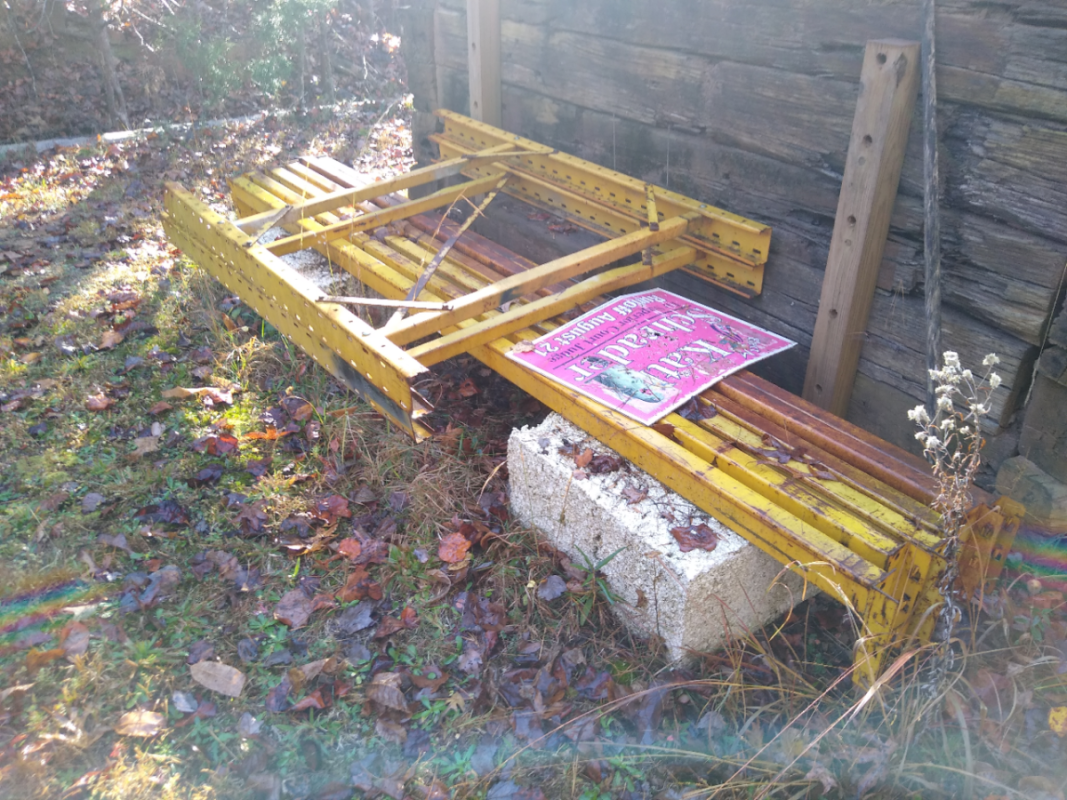I’ve been doing woodworking as a hobby off and on since I was a kid and finally built myself a little shop in the basement. I’ve got a few people asking me to build some larger scale projects and while I feel confident with the construction I struggle with the finish work, sanding and staining specifically. I had intended to take a class through Highland Woodworking but they stopped them indefinitely. Wondering if there are any professional or semi-professional woodworkers around here that could give me some tips or point me towards some good resources. I’d still love to do a class so I could get some hands on training but not sure how soon that will be an option. Thanks!
Navigation
Install the app
How to install the app on iOS
Follow along with the video below to see how to install our site as a web app on your home screen.
Note: This feature may not be available in some browsers.
More options
-
ODT Gun Show & Swap Meet - May 4, 2024! - Click here for info
You are using an out of date browser. It may not display this or other websites correctly.
You should upgrade or use an alternative browser.
You should upgrade or use an alternative browser.
Woodworking - Need Help w/ Finish Work
- Thread starter ptelite
- Start date
Staining wood is almost fool proof. Wipe it on. Let it sit for a brief period. Wipe it off. If you have a spot that didn't blend well. Put a little on a rag and rub around the area. When l stain l only use rags no brushes.. Poly is a little harder. I use light steel wool between coats. You can get it slick as glass that way. A good brush is key there though.
Maybe it is the stain I am using or I’m leaving it on too long, I keep ending up with really blotchy spots, especially in detail areas that are harder to get to. And inevitably I find areas that I didn’t sand as well as I thought and I can never get the color match perfect if I sand that area back down and then try to stain again. I guess it is more fool resistant than fool proof, and I’m on the side of the fool. 

90% + of staining and finishing is prep work, always sand more than you think you need too. Also a good idea to sand and then damp the wood to raise the grain and show where you didn't sand good enough and sand again.
I prefer to use a Trans Tint die vs. most stains you can get at the big box store. You can mix your own colors and stain mixed with alcohol. A lot depends on the type of wood, some woods don't take stain very well and will need additional prep work. After the die I use a shellac seal coat than a clear coat usually a lacquer finish of some sort.
I prefer to use a Trans Tint die vs. most stains you can get at the big box store. You can mix your own colors and stain mixed with alcohol. A lot depends on the type of wood, some woods don't take stain very well and will need additional prep work. After the die I use a shellac seal coat than a clear coat usually a lacquer finish of some sort.
I've been in the wood industry for 20+ years, in every role from owning mid-sized cabinet manufacturing to plant efficiency consulting to (now) installation contractor. Finishing is without a doubt the bane of the industry. There is nothing easy or uncomplicated about it, no matter who chimes in and says "Oh, it's easy...just wipe on and wipe off, don't forget to breathe...". If you're a small one-man operation without a spray booth or a decent spray rig (Kremlin or Binks) and are just getting your feet wet in the trade, your best bet is to steer clear from offering anything with a finish outside of a birdhouse or something that isn't expected to last decades. I can't count how many times I've seen amateur/novice finishes peel off, then come back and bite the provider bad.
If you really want to learn more about the proper ways to apply finishes, Mohawk has classes (I'm sure you could even find some online now), and Wurth Wood Group used to give classes in everything from basic finishing, to proper material prep, to repairs using the ML Campbell product line. You will need to know all of this BEFORE offering it to a customer base. Believe me, if you don't, you'll wish you had the first time someone rejects a completed project because the finish didn't turn out the way they thought, or looks hazy, rough, blotchy, etc etc etc. Highland WW is ok for the home hobbyist, but for any type of scale finishing stick with the people who specialize in that arena.
Stop by Southern Paints in Smyrna and talk with Larry, he will give you a good start.
If you really want to learn more about the proper ways to apply finishes, Mohawk has classes (I'm sure you could even find some online now), and Wurth Wood Group used to give classes in everything from basic finishing, to proper material prep, to repairs using the ML Campbell product line. You will need to know all of this BEFORE offering it to a customer base. Believe me, if you don't, you'll wish you had the first time someone rejects a completed project because the finish didn't turn out the way they thought, or looks hazy, rough, blotchy, etc etc etc. Highland WW is ok for the home hobbyist, but for any type of scale finishing stick with the people who specialize in that arena.
Stop by Southern Paints in Smyrna and talk with Larry, he will give you a good start.
Best ingredients for success, in my opinion: Elbow grease and patience.
I still have pieces I made 25 years ago that have held up perfectly. For situations where alchohol is unlikely to ever come into contact with the piece, I like shellac. It's incredibly forgiving of application mistakes. Also works extremely well as a clear coat for wood dyed with stain. For durability particularly where the surface might come in contact with alcohol, I've used a variety of wipe on products, from poly to gel stains. As someone already stated, prep is key. Sanding, sanding, and then some more sanding. I rarely go higher than 240 grit. And multiple coats, of course, with conservative amounts of dry time.
There's also the issue of which wood you built with. Softwoods are a pain in the ass with anything that soaks into the grain. I much prefer shellac on pine, fir, and similar. Hard maple, cherry and mahogony are truly a pleasure to finish. Oak I find to be middle of the road.
I still have pieces I made 25 years ago that have held up perfectly. For situations where alchohol is unlikely to ever come into contact with the piece, I like shellac. It's incredibly forgiving of application mistakes. Also works extremely well as a clear coat for wood dyed with stain. For durability particularly where the surface might come in contact with alcohol, I've used a variety of wipe on products, from poly to gel stains. As someone already stated, prep is key. Sanding, sanding, and then some more sanding. I rarely go higher than 240 grit. And multiple coats, of course, with conservative amounts of dry time.
There's also the issue of which wood you built with. Softwoods are a pain in the ass with anything that soaks into the grain. I much prefer shellac on pine, fir, and similar. Hard maple, cherry and mahogony are truly a pleasure to finish. Oak I find to be middle of the road.
Similar threads
- Replies
- 11
- Views
- 442
- Replies
- 5
- Views
- 130









